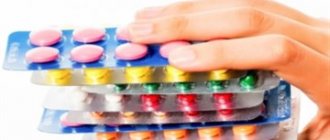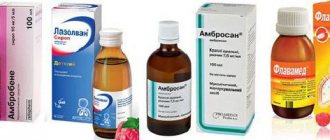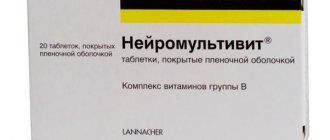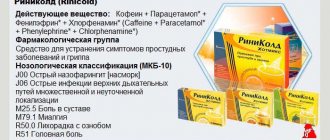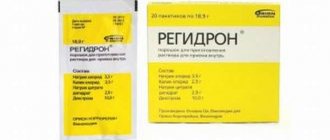Diphenhydramine is a strong antihistamine, used mainly as a component of a lytic mixture, which also includes papaverine and analgin. Used when giving injections, which can give an extensive allergic reaction and cause anaphylactic shock. Diphenhydramine is available both in the form of an injection solution and in the form of tablets.
Indications for use
Diphenhydramine can be prescribed independently or as part of complex therapy for many diseases.
Indications for the use of Diphenhydramine are:
- pathologies of allergic origin - urticaria, hay fever, allergic conjunctivitis, vasomotor rhinitis, allergies to medications, itchy dermatoses;
- angioedema;
- anaphylactic shock;
- serum sickness;
- radiation sickness;
- hemorrhagic vasculitis;
- sea and air sickness;
- acute iridocyclitis;
- injuries, burns of skin and soft tissues;
- sleep disorders, neurosis (more often in combination therapy).
Benefits of use
Reviews from people who have taken Diphenhydramine in various forms indicate that it can be very effective in the development of infectious diseases, relieving swelling and redness in the mucous membranes and helping the patient sleep.
Diphenhydramine in combination with other drugs reduces high fever well and enhances the effect of the latter. This lytic mixture has an analgesic and hypnotic effect. If allergic reactions occur on the skin, it is better to use ointments, aerosols or lotions that contain diphenhydramine. Such medications have a local effect on the problem area, relieve itching and discomfort. In addition, local application avoids systemic effects such as drowsiness and does not affect the gastric mucosa. For insect bites, you can use a solution from an ampoule, which you need to moisten a cotton swab and apply to the affected area.
pharmachologic effect
Therapeutic effects of Diphenhydramine:
- antihistamine;
- anesthetic;
- antispasmodic
- antiemetic;
- hypnotic.
After taking the tablets, the active ingredient is quickly absorbed and distributed in the tissues of the body. After an hour, the maximum therapeutic effect is achieved, which lasts 4–6 hours. The next day, Diphenhydramine is completely removed from the body.
Diphenhydramine easily penetrates the blood-brain barrier and accordingly affects the nervous system, reducing concentration and reaction speed.
Also, the active ingredient easily penetrates the placental barrier, affecting the fetus, and is absorbed into breast milk, causing a hypnotic effect in a breastfed baby.
Diphenhydramine price, where to buy
The price of Diphenhydramine tablets is 3-6 rubles per pack of 10 pieces. How much do tablets cost in Ukraine? The package can be purchased for 6-8 hryvnia.
You can buy Diphenhydramine in ampoules at a price of 25-30 rubles for 10 pieces in Russia and for 15-18 UAH in Ukraine.
- Online pharmacies in RussiaRussia
- Online pharmacies in UkraineUkraine
- Online pharmacies in KazakhstanKazakhstan
Pharmacy Dialogue
- Diphenhydramine (amp. 1% 1 ml No. 10 (5x2)) Belmedpreparaty
24 rub. order - Diphenhydramine tablets 50 mg No. 20DHF JSC
11 rub. order
- Diphenhydramine tablets 50 mg No. 10DHF JSC
4 RUR order
- Diphenhydramine (amp. 1% 1ml No. 10) DHF JSC
30 rub. order
show more
PaniPharmacy
- Diphenhydramine ampoule Diphenhydramine solution d/in.
1% amp. 1ml No. 10 Ukraine, Health of the people LLC 17 UAH. order - Diphenhydramine ampoule Diphenhydramine solution d/in. 1% amp. 1ml No. 10 Ukraine, Darnitsa ChAO
23 UAH order
- Diphenhydramine ampoule Diphenhydramine solution d/in. 1% amp. 1ml No. 10 Ukraine, Galichfarm JSC
14 UAH order
show more
Contraindications
Absolute contraindications to the use of Diphenhydramine are:
- exacerbation of stomach or intestinal ulcers, stenosing peptic ulcer;
- bladder stenosis;
- prostatic hyperplasia;
- angle-closure glaucoma;
- epilepsy (the drug activates convulsive reactions and can provoke an epileptic attack);
- individual intolerance to the main and auxiliary components of the drug;
- period of pregnancy and breastfeeding.
Pregnant women are prescribed Diphenhydramine only in case of urgent need and only as an antiemetic for toxicosis.
It is strictly forbidden to prescribe Diphenhydramine to newborns.
Diphenhydramine should be used with caution and under strict medical supervision by patients who:
- increased intraocular pressure;
- disorders of the cardiovascular system;
- hyperthyroidism (increased production of thyroid hormones).
During the treatment period, it is prohibited to drive vehicles or carry out any activities that require increased concentration and reaction speed.
special instructions
When studying the rules for using Diphenhydramine with antihistamine activity, you should pay attention to the special instructions in the instructions:
- during the treatment period, refrain from driving vehicles and dangerous machinery, since the drug causes a hypnotic effect, reduces the speed of psychomotor reactions and concentration;
- during therapy, avoid prolonged exposure to the sun due to the appearance of photosensitivity;
- the use of the drug as an antiemetic effect may make it difficult to diagnose appendicitis and recognize symptoms of overdose with other drugs.
- How to find a stolen phone yourself. Are phones found if stolen?
- Chlorophyllipt for gargling
- How to choose a private detective - hire, prices for services and activities
Mode of application
Dosages of the drug are selected depending on the disease and age of the patient, and the form of release of the drug.
Pills
For adults, Diphenhydramine is prescribed at a dose of 0.03–0.05 g, dosage frequency is from 1 to 3 times a day. The maximum permissible single dosage should not exceed 0.1 g, daily - 0.25 g. The therapeutic course lasts no longer than 10–15 days.
As a sleeping pill, the drug is taken half an hour before bedtime in a dose of 0.05 g. To normalize sleep, the doctor may prescribe Diphenhydramine alone or in combination with other sleeping pills.
When motion sickness occurs, drink ½ or a whole tablet with a dosage of 0.05 g; if necessary, repeat the dose after 4–6 hours.
Children are prescribed:
- 0.0125–0.025 g (but not more than 0.075 g per day) – at the age of 2 to 6 years;
- 0.025–0.05 g (but not more than 0.15 g per day) – from 6 to 12 years.
Frequency of administration - no more than every 6-8 hours.
Injection
Diphenhydramine injection solution is administered intramuscularly in 1-5 ml doses. A single dose depends on age and is:
- 5 ml – for adults and adolescents over 15 years old;
- 1.5–3 ml – children from 6 to 14 years old;
- 0.5–1.5 ml – from 2 to 5 years;
- 0.2–0.5 ml – for children under one year old.
The drug is prescribed twice a day, and the course of treatment averages 7 days.
The injection solution can also be administered intravenously. In this case, the contents of the ampoule are pre-diluted in 10-15 ml of physiological solution, the drug is administered very slowly, over 3-5 minutes.
The drug is administered intravenously by drip based on the ratio: 0.02–0.05 g of Diphenhydramine per 75–100 ml of isotonic sodium chloride solution.
To relieve fever and fever, Diphenhydramine and Analgin are mixed in one ampoule. But in this case, you need to very carefully select the dosage and administer the drug no more than once every 6-8 hours. In case of pronounced spasm of smooth muscles, injection administration of Diphenhydramine, Analgin, No-shpa or another antispasmodic (Papaverine, Drotaverine) is allowed.
Suppositories
Prescribed in dosages:
- 0.005 g – children under 3 years of age;
- 0.010 g – children 3–4 years old;
- 0.015 g – from 5 to 7 years;
- 0.020 g – from 8 to 14 years.
Suppositories are administered rectally 1–2 times a day after a cleansing enema or spontaneous bowel cleansing.
Solution at a concentration of 0.2–0.5%
Used in ophthalmology: 1-2 drops of solution are instilled into the conjunctival sac 2 to 5 times a day.
Gel
Used to treat affected areas of the skin, apply a thin layer several times a day.
Lytic mixture
A lytic mixture is a solution in which analgin, papaverine and diphenhydramine are used. It is used as a means to reduce fever, dramatically facilitates the immune response to an irritant and lowers the temperature level. It has an anti-inflammatory and anticonvulsant effect, therefore we can assume that this mixture acts not only on viral diseases, but also on diseases of a bacteriological nature.
The indication for the use of the lytic mixture is the registration of a temperature above 39 degrees.
An injection of the lytic mixture is prescribed and performed only by a person with experience in injections or a secondary medical education or higher. However, if you cannot wait for a doctor - the temperature rises, convulsions begin or the child loses consciousness, then it is necessary to resort to this procedure.
The mixture requires:
- Analgin 50%;
- Papaverine 2%;
- Diphenhydramine 1%.
All drugs are in ampoules and already contain water for injection. Analgin in the mixture acts as a remedy against the temperature itself, papaverine as an antispasmodic, preventing the development of seizures. Diphenhydramine is used as a sedative and anti-allergen, in order to exclude the possibility of developing complications of the anti-fever drug.
For an injection, the dosage of all substances is calculated according to the proportion - 2/2/1. Analgin is taken at two hundredths of a milliliter per kilogram of body weight, papaverine - 0.1 milliliter for the baby's full year, diphenhydramine - 0.4 milliliters per year. If the child is less than a year old, then the minimum dosage is taken for 1 year.
The injection also requires 70% medical alcohol or alcohol wipes for processing ampoules and a syringe. Before injecting the solution, thoroughly clean the ampoules and the place where you will inject. If you don’t have any disinfectants available, you can use regular soap.
For children from 0 to 3 years old, a dosage of 2 ml syringe is sufficient, and for older children - 5 ml.
The needle is inserted two-thirds into the outer upper square of the buttock, perpendicular to the skin. Make sure that there is no air in the syringe and never touch the needle with dirty hands.
Side effects
Diphenhydramine can provoke the development of undesirable side reactions from various organs and systems of the body:
- uncontrolled decrease in blood pressure, slow heartbeat, thrombocytopenia and agranulocytosis, hemolytic anemia - from the cardiovascular and hematopoietic system;
- general weakness, decreased concentration, drowsiness, irritability and excitability, dizziness, lack of coordination of movements, tremors and convulsions, neuritis, tinnitus, deterioration of visual function - from the nervous system and sensory organs;
- dry mouth, lack of appetite, nausea, even vomiting, intestinal dysfunction - from the digestive system;
- dryness of the mucous membranes of the nasopharynx, nasal congestion, difficulty breathing, increased viscosity of bronchial secretions - from the respiratory system;
- frequent or difficult urination - from the excretory system;
- increased sweating, increased sensitivity to light, chills, various allergic reactions from other body systems.
Diphenhydramine in any form of release is strictly prohibited from being combined with alcoholic beverages. This combination is fraught with a significant increase in alcohol intoxication and negative side reactions, which can provoke psychosis.
Negative side effects can be avoided if you do not exceed the dosage and frequency of use prescribed by your doctor. In case of overdose, adverse reactions are aggravated, which manifests itself:
- dry mouth;
- difficulty breathing;
- severe redness of the face;
- depression or, conversely, stimulation of the central nervous system;
- confusion.
An overdose can cause a heart attack or paralysis. Other severe functional impairments are possible, and in young children, seizures and even death.
In case of overdose, it is necessary to induce vomiting, rinse the stomach, take sorbents and immediately go to the hospital. In a medical institution, if necessary, intravenous administration of plasma-substituting fluids and drugs that increase blood pressure, other supportive and symptomatic therapy, monitoring of respiratory function and blood pressure levels are carried out.
Drug interactions
Diphenhydramine improves the effectiveness of medications that depress the nervous system. Other drug interactions:
- Monoamine oxidase inhibitors can enhance the anticholinergic activity of diphenhydramine injections.
- Psychostimulants taken simultaneously with the drug have an antagonistic effect.
- The medication reduces the effectiveness of apomorphine (an emetic for the treatment of poisoning) and increases the anticholinergic effects of drugs with m-anticholinergic action.
Analogues of the drug
The following drugs have similar therapeutic effects:
- Allergan B;
- Amidryl;
- Allergic;
- Dimidryl;
- Allerdil;
- Restamin;
- Diphenhydramine.
Diphenhydramine is a drug often used in therapeutic practice. The drug acts quickly, helps lower high fever, reduce pain, stop allergic reactions, and get rid of insomnia. However, the drug can cause quite serious side effects, so it must be prescribed according to strict indications and used under medical supervision. Exceeding the recommended dosage and frequency of administration is fraught with serious disruptions to the functioning of various body systems.
Conditions of sale and storage
The therapeutic agent can be purchased at the pharmacy with a doctor's prescription. Store the drug in a cool and dark place out of reach of children. Shelf life: 5 years.
Analogs (briefly)
If necessary, Diphenhydramine can be replaced with other drugs that are similar in composition and therapeutic effect. Among the most popular substitutes:
- Analdim. Includes the additional component metamizole sodium, which has a pronounced analgesic effect. Has a fast and effective effect. Available in the form of rectal suppositories.
- Dermadrin. The ointment contains diphenhydramine, which has methaneesthetic, cooling, antiallergic and analgesic effects.
- Kafanol. An antihistamine used systemically. Its active ingredients include diphenhydramine, ammonium chloride, sodium citrate and menthol. When used, the syrup produces sedative, hypnotic, antiparkinsonian and antiemetic effects.
- Flurex. It has antihistamine, antipyretic and analgesic properties. The medicine contains paracetamol, ascorbic acid and diphenhydramine hydrochloride. It relaxes smooth muscles well, reduces pain, eliminates allergies and strengthens the immune system.
Replacing Diphenhydramine with a similar medication should only be carried out by the attending physician, taking into account the type of pathology, the severity of symptoms and the individual characteristics of the patient’s body.

